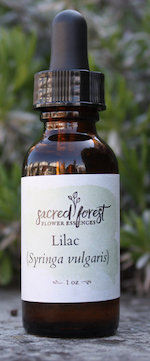Oh, Them Broken Bones
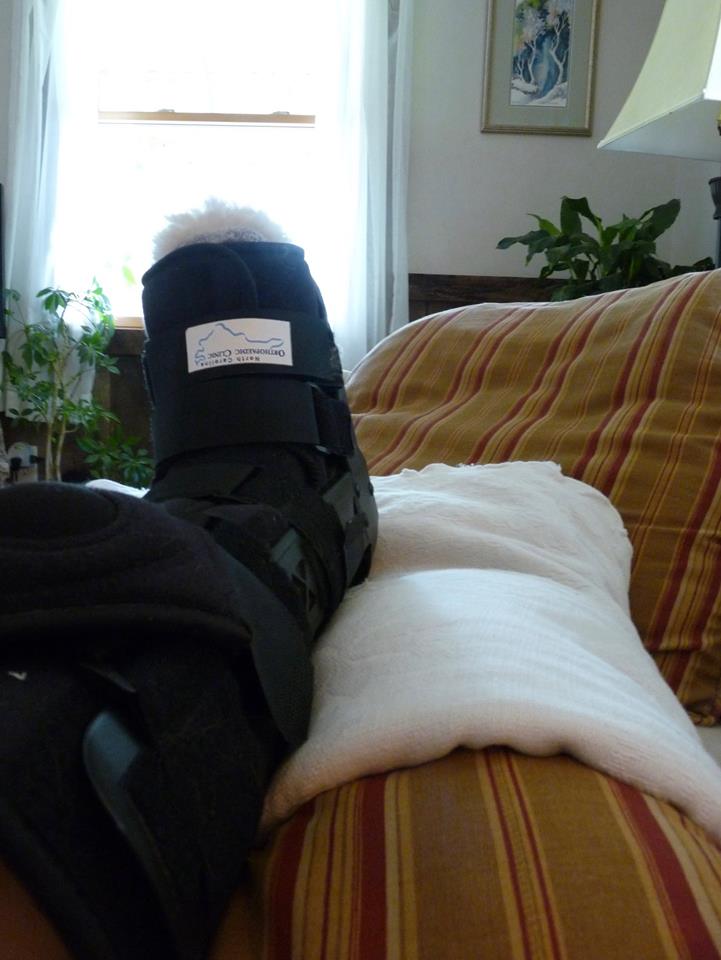
Deb broke her calcaneus (heel bone) in early May 2017 while caring for her Mom; and Harry crushed his L1 vertebra when he fell 10 feet off our porch roof this past September.
Accidents happen. While we can do everything possible to prevent them, sometimes we trip, fall or get injured no matter how careful we are. Because your children may be at risk of injury on the playground, playing sports or any of dozens of ordinary daily activities, we thought it might be good to share what we know about tending broken bones so that if you are ever faced with having a broken a bone or tending someone who does, you have a resource of healing information.
So, back to our accidents ~
After we sought immediate appropriate professional medical care (by getting Deb to the urgent care center and calling an ambulance [911] for Harry) , we began to apply the things we knew to aid and hopefully accelerate healing of broken bones.
The very first thing that we did when we had our accidents was to use a flower essence specifically for aid during traumatic events: Bach Flower Essence Rescue Remedy®. We were very happily surprised that the ER nurses encouraged the use of this remedy, which we carry with us at all times. When we returned home, we used our own Red Clover flower essence, which provides a very similar support for trauma and shock.
Let’s not build unrealistic expectations: different types of fractures and different bones take more or less time to heal. Some bone breaks might take only 4 weeks to heal while other fractures might take 24 weeks or more. And there are factors such as general health, age and other conditions like osteoporosis that affect healing. So, it is hard to say what ‘normal’ is for any particular person or break.
Having said all the above, our research and herbal training on broken bones revealed in general it is advised to:
~ Avoid inflammation-causing foods like sugars (including high-fructose corn syrup), artificial trans-fats, excessive alcohol and processed meats. Instead, eat inflammation reducing foods: ‘good’ cooking oils (like olive oil rather than ‘vegetable oil’), tree nuts, fruit, garlic, aromatic culinary herbs, turmeric, chocolate (YA-HOO!!), green tea, beans, onions and avocados.
~ Move as much as is comfortable when you are able without aggravating the break. (You definitely could have made a lot of money betting on turtles against Harry right after his failed attempt at flight!) You need to keep your muscles in tone and prevent atrophy.
~ Get good nights sleep; a lot of repair and healing occurs while you sleep.
~ Also, there is debate about the application of heat and/or cold to an injury like this. We chose to alternate between the two. You may decide to take a different course concerning temperature. Check with your physician.
And, of course, there are several herbs that should assist a body in healing broken bones:
[If you have any kind of negative reaction to any remedy, stop it immediately.]
* Arnica (Arnica montana) taken as a homeopathic remedy orally and/or applied topically as a cream, gel or ointment as soon after the injury as practical should help reduce swelling, bruising and pain.
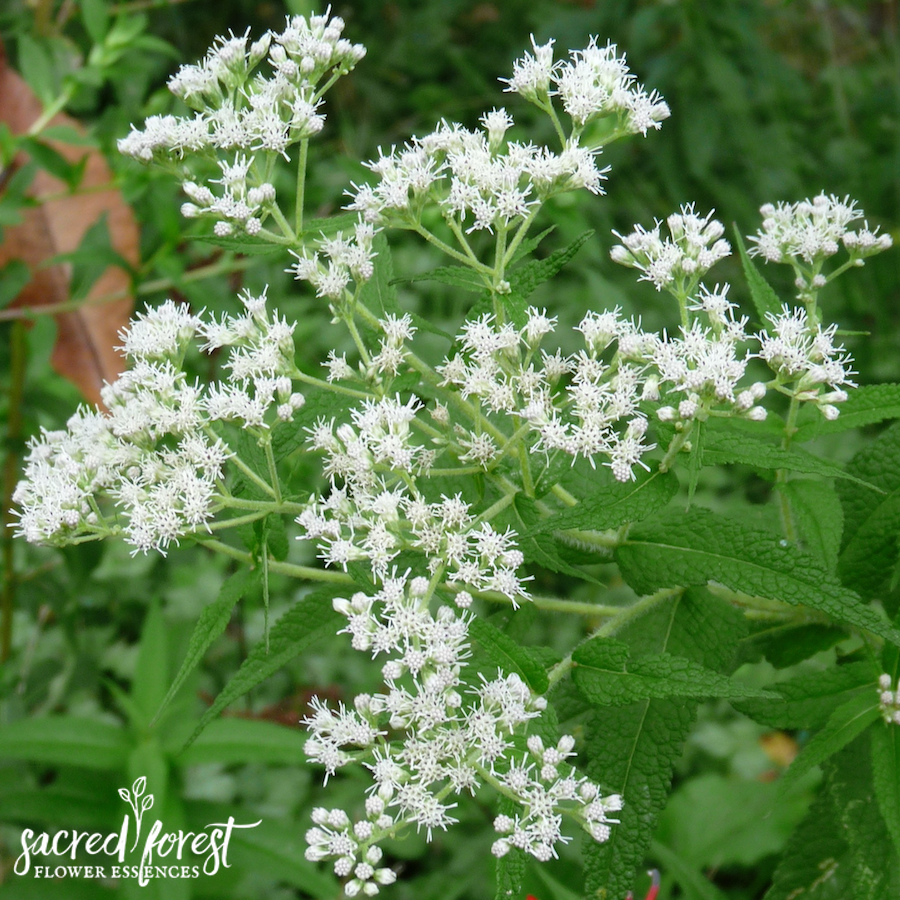
* A plant called, appropriately, Boneset (yes, it’s pronounced “bone set”) (Eupatorium perfoliatum) assists bones knitting back together. This three to four foot tall plant with an open head of small white flowers has the interesting ‘signature’ of having its opposite leaves fused together at their base… a strong indicator of its use. Actually, Boneset is particularly indicated and useful in spinal compression fractures, as it is believed Boneset will open up the crushed bone to allow new bone to be built as it restores the nearly original shape. We believe we observed this in the progressive X-rays of Harry’s spine.
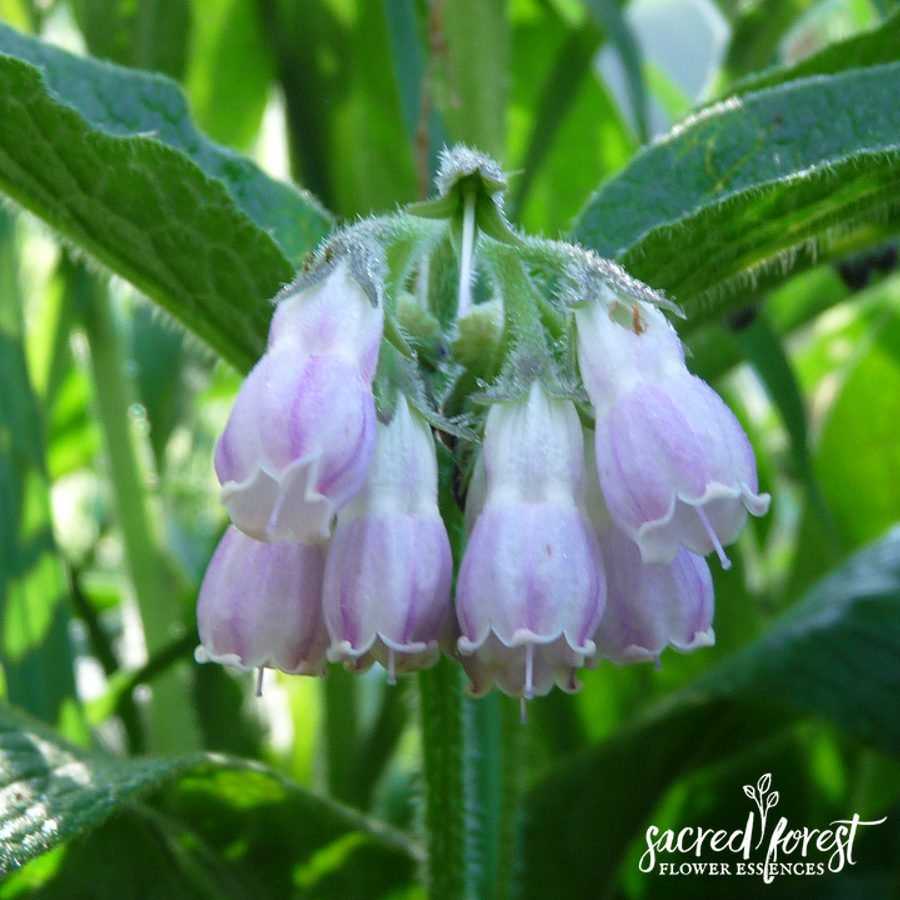
* Comfrey (Symphytum officinale) is a powerful aid to healing, but it should be used with a little caution. Comfrey is a fuzzy perennial plant related to borage with bell-shaped, lavender-colored flowers. We have a lot (and increasing!) around our home to a point that it might be considered invasive. It accelerates healing so much that it will cause wounds to close around debris, so make sure wounds are well cleaned and make sure broken bones are properly aligned and set before beginning Comfrey. [Take note: there is some concern over toxicity of Comfrey root, so only Comfrey leaves should be taken internally as a tincture or water extract. Also, Comfrey should be avoided during pregnancy.]
* Horsetail rush (Equisetum arvense) is an interesting ‘primitive’ plant (100 million year-old fossils have been found!) that has no true leaves. It is very high in silica content and acts in aiding strong bone construction.
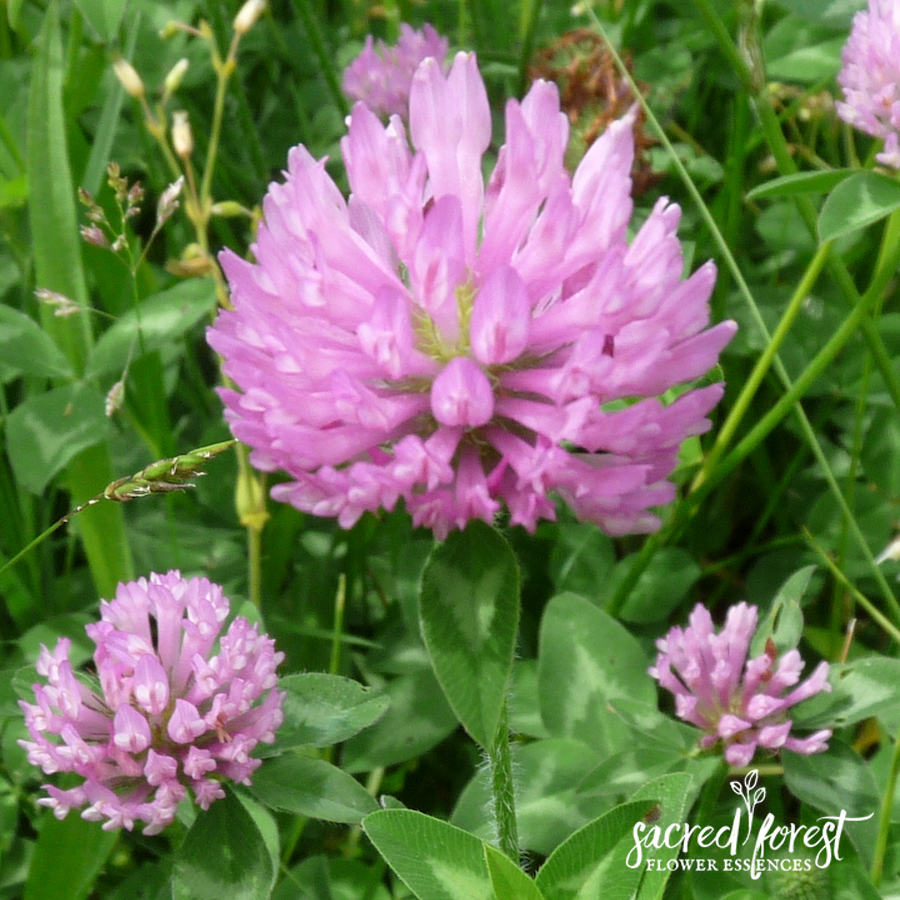
So, what we did, after the doctors told us the bones were in their proper position to heal and properly immobilized, was to immediately begin our regimen of herbs. For each of our respective fractures, we took homeopathic Arnica 30c internally once an hour and applied an Arnica gel over the injury three times daily for the first few days. We also continued to take Red Clover flower essence. During Harry’s fall, Deb, not surprisingly, was traumatized as well so she also took Red Clover.
The other above herbs, except Elder, were all taken internally as a tincture (ethyl alcohol extract) thrice daily (except Comfrey, we had overlooked making this tincture [which is most definitely now on our ‘to do’ list for this summer], so we purchased and used homeopathic Symphytum officinale 30c).
We also made infusions (water extracts) of fresh Boneset, Elderberry and Comfrey alternately and drank a quart during the day for several weeks after the accident. The difference between a tea and infusion is a tea is steeped for 5 to 20 minutes while an infusion is steeped for 4 to 12 hours. Boneset can be a bit unpleasant so adding a little honey may help render it a little more palatable. Interestingly, it seems that when Boneset becomes completely unpalatable your body no longer needs it in this form.
And we would take the plant material from the infusions (and Yarrow) and apply a poultice to the skin over the break. (Luckily neither fracture required a solid cast; instead having a brace that was easy to carefully remove to expose the area for treatment then refasten.)
Another tool we employed was homeopathic remedies.
* As mentioned, we used homeopathic Comfrey (Symphytum officinale) 30c. We also took Silicea 30c (acts similarly to the Equisetum mentioned above), Calcarea carbonica 30c and Calcarea phosphorica 30c all to aid healing and strengthen the new bone being built. (As mentioned above, we also took Arnica every hour for the first 3 days.)
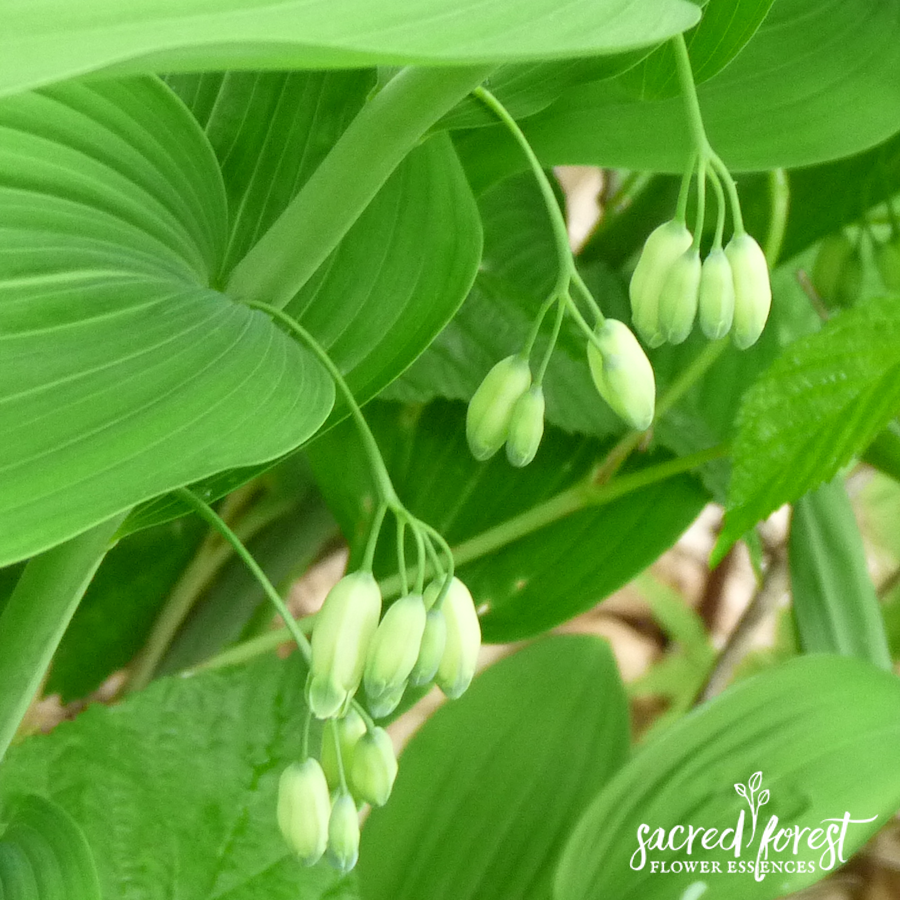
* Solomon’s Seal (Polygonatum spp), which we will discuss in much more detail in a future letter, helps ligaments and tendons heal while helping bone breaks draw together for proper healing. And beyond helping with fracture healing, Solomon’s Seal helps keep bone joints healthy by helping the body regulate synovial fluids.
* Yarrow (Achillea millifolium) is a wonderful ‘intelligent’ blood herb. It stops bleeding from an open wound, yet helps blood flow better to where it is needed thus getting nutrients to the healing bone. It also helps bruises heal quickly. This herb was especially helpful for Deb’s broken foot, since she had a badly bruised sprain on top of the fracture. [Take note: Yarrow should be avoided during pregnancy.]
* In addition to the berries being antiviral, especially against influenza, Elderberry (Sambucus canadensis) leaves and stems are also a known treatment for broken bones. Only very dry or very fresh Elderberry material should be used for medicinal purposes since toxins may develop then dissipate as it dries.
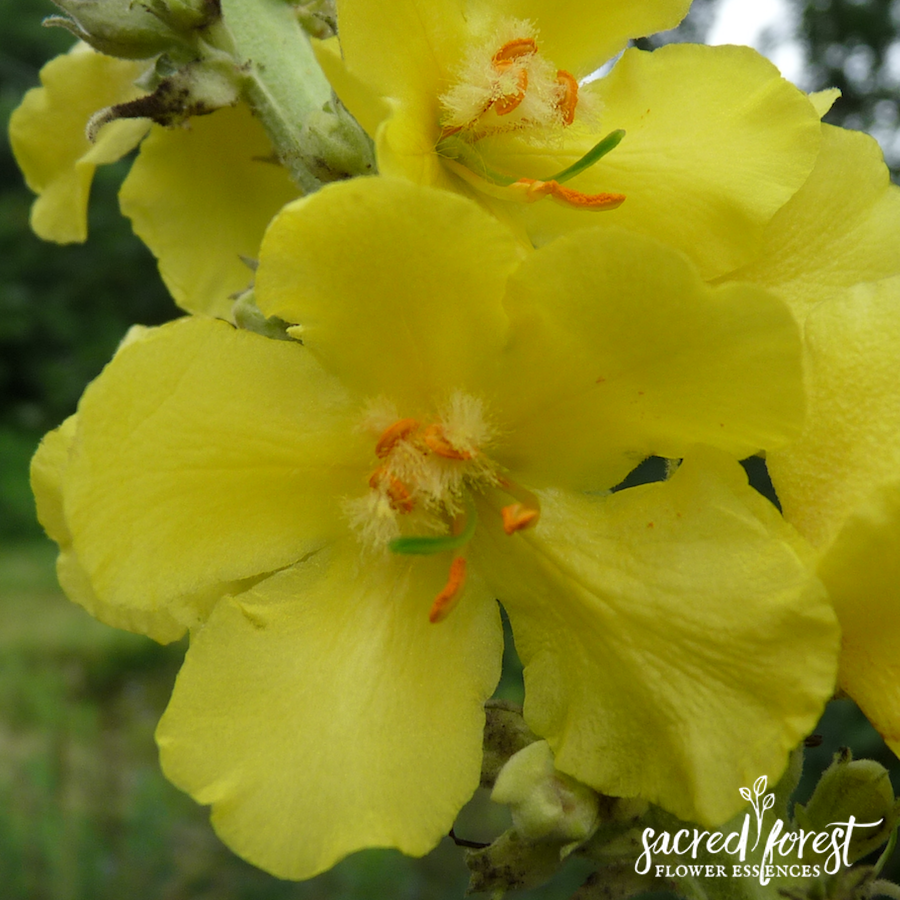
*
Once the doctors were satisfied the bone(s) had healed sufficiently to
abandon the braces so we could begin physical therapy and approach
normal activity, we added Teasel (Dipsacus fullonum) root tincture and Mullein (Verbascum thapsus)
leaf tincture. Jim McDonald writes: “Teasel root has been used to
treat torn connective tissues, and may be among the best remedies for
torn muscles.” Matthew Wood believes Mullein “has a moistening,
lubricating effect on the synovial membranes… so that it is hydrating to
the spine and joints. It is often indicated in back injuries. People
think they are untreatable and incurable, but an increase [of] the
synovial fluids will make the spine more pliable and comfortable. The
vertebra will slip back into place more readily, pain and inflammation
will decrease and the condition will get better.” Jim McDonald agrees
that Mullein is valuable in straightening and realigning the spine,
though he suspects a different specific action. We probably should have
added these two herbs sooner, especially for Harry.
The last two things we did were to employ Reiki (pronounced “RAY-key”)
and Qi (pronounced “chi”) healing energies (which we and a friend are
all able to do) to aid healing during incapacitation. (Probably not as
much as we could/should have since we were more focused on care and
comfort of the patient and herbs – and, honestly, initially forgot
[Doh!] we had this tool in our repertoire.) And, finally, when mobility
had returned enough to allow, Qi Gong exercises helped immensely to
finish the healing processes.
We estimate we increased our bone and other tissue healing rates by mmm…
maybe 10 to 20%? That may not seem significant, but every day quicker
returning to ‘normal’ is valuable. (Maybe more, since Harry was out
uprooting wild invasive rose bushes – 15 minutes at a time – 4 months
after his fall!) And less pain is always a good thing too! Don’t you
agree?
While it is not likely you will often (if ever) need a full set of bone
building remedies, it might be a good idea to have a few herbs in your
home first aid kit.
* Arnica gel or cream, which you can get at most drugstores, is handy
for bruises and overworked muscles. Homeopathic Arnica would be good
for the same reasons and may be easier to use if applying topical Arnica
is a problem (like reaching the middle of your own back or you can’t
get to the damaged area due to a cast). It is also a must have for days
when you’ve physically overworked and your body hurts.
* Yarrow dried leaves (for making a compress or poultice) or tincture is
also good at healing bruises as well as stopping bleeding of cuts (the
dried leaves for cuts, not the tincture –Yow!).

* Solomon’s Seal tincture or oil (or salve) is good to have on hand for repetitive motion injuries or strains and sprains. It’s also a good for arthritis.
* Red Clover Flower Essence for times of great shock, trauma or distress.
One more thing: if you have broken a bone in the past and it still hurts, using the above herbs and homeopathic remedies may still aid your body’s healing now – even years after the injury. The same is true with using other herbs and homeopathic remedies for many illnesses or trauma. Use the herbs that you would have used at the time of the injury/illness to treat longstanding issues and residual pain or distress.
So… go outside, enjoy nature, have fun, be careful and when an unforeseen accident breaks a bone, consider calling on nature for some assistance. We hope your children don’t have a fall off the monkey bars or an injury when playing soccer but if they do ~ or you do ~ we hope this information is of help to you!
We covered a lot here. Let us reiterate: each case is different, so if you use any of this information, your results may be different. We may be able to offer advice to help you more effectively individually should this or other situations require it – especially if the injury is not straight-forward. You can contact Deb here.
You can purchase Solomon’s Seal tincture here. We also have a limited supply of Solomon’s Seal salve you can get here.
To have Sacred Forest Red Clover Flower Essence on hand for shock, please click here.
To your health, happiness and wellbeing,

[Also, let us say that we are not dispensing medical advice or making suggestions for treatment of any disease or condition. We are merely reporting our experiences. Seek proper professional medical advice for any medical condition about which you are concerned. Any statements and claims regarding any product or advice offered have not been evaluated by the US Food and Drug Administration (FDA).]
